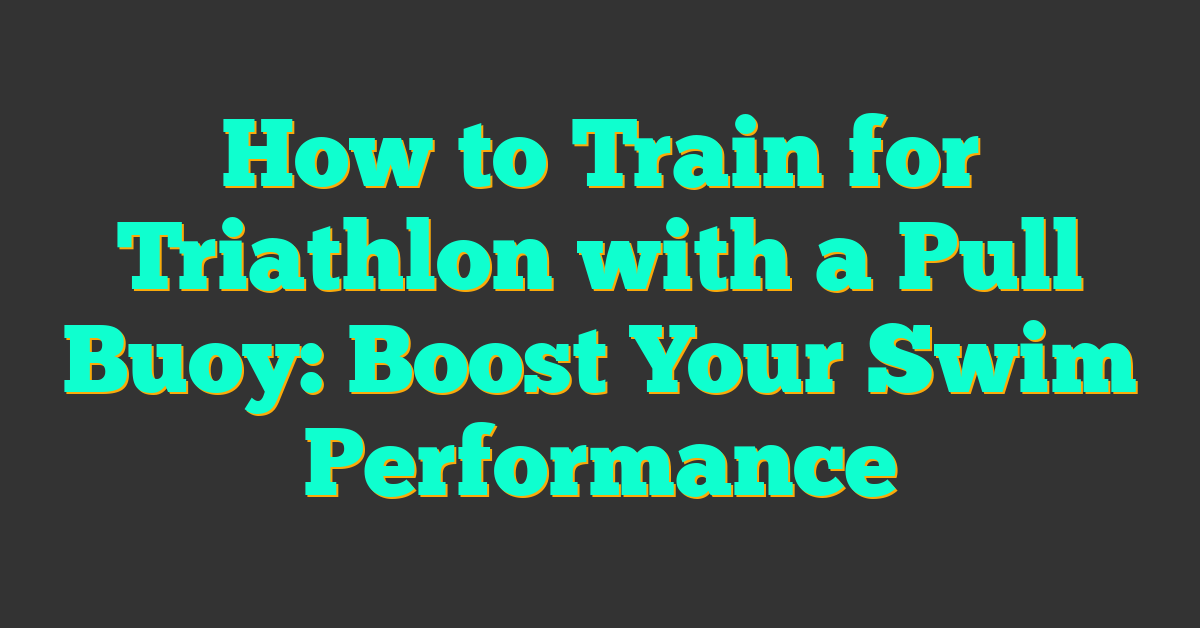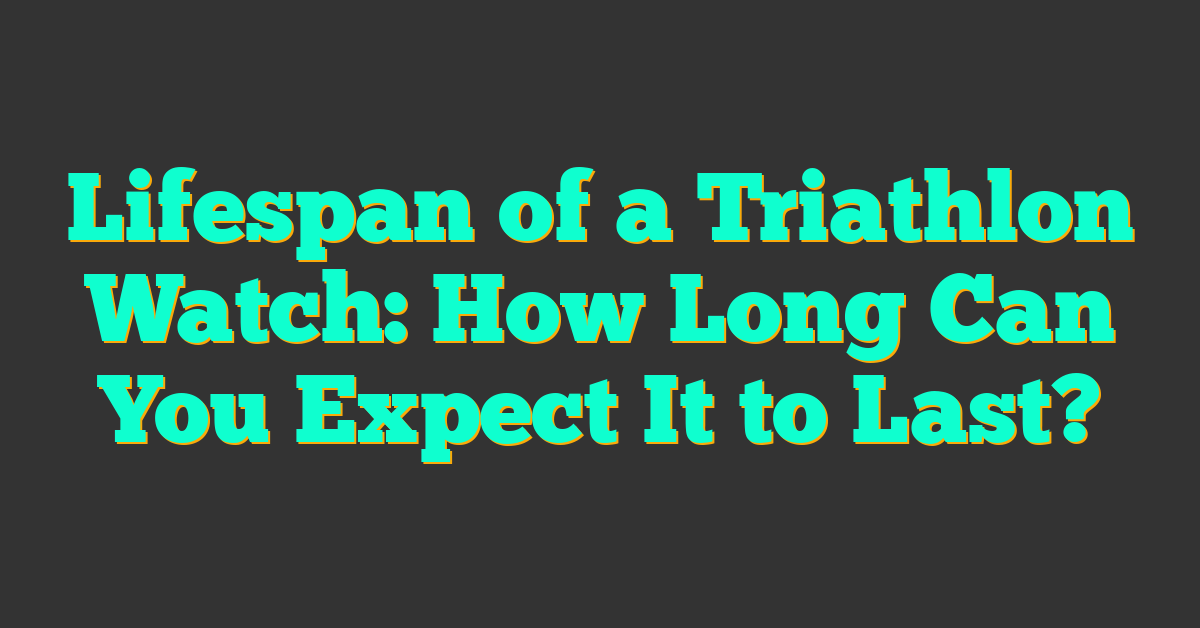Swimming is a key component of any triathlon, and I’ve found that incorporating a pull buoy can make a significant difference in training. Using this simple tool helped me improve my technique and build upper body strength more efficiently.

In this article, I’ll share how you can effectively integrate a pull buoy into your triathlon training regimen. From enhancing your stroke to boosting endurance, the pull buoy offers benefits that can elevate your performance on race day.
Whether you’re a seasoned triathlete or just starting out, understanding how to train with a pull buoy can give you that extra edge. Let’s dive into the strategies that worked for me and can work for you too.
Understanding the Pull Buoy and Its Benefits
A pull buoy is a flotation device placed between the thighs to keep the legs buoyant during swimming. Using it, I focus solely on my upper body, refining my arm strokes without kicking. This separation enhances upper body strength by isolating the arms and shoulders, allowing targeted muscle engagement.
Incorporating a pull buoy improves stroke technique by promoting proper body alignment. I maintain a streamlined position, reducing drag and increasing efficiency. This focus on form leads to smoother, more effective movements in the water.
Additionally, the pull buoy boosts endurance by allowing longer swim sessions with less fatigue. By concentrating on the arms, I build stamina crucial for the swimming leg of a triathlon. Consistent use of the pull buoy results in better endurance and overall performance during races.
| Benefit | Description |
|---|---|
| Upper Body Strength | Isolates arms and shoulders for targeted muscle work. |
| Improved Stroke Technique | Promotes proper body alignment and efficient movements. |
| Increased Endurance | Allows longer swim sessions, building stamina for triathlons. |
Using a pull buoy, I enhance my swimming efficiency and build the necessary strength and endurance to excel in triathlon events.
Integrating the Pull Buoy into Your Triathlon Training
Incorporating a pull buoy into your triathlon regimen can significantly enhance your swimming performance. Here’s how to effectively use this tool to boost your training.
Strengthening Upper Body for Swimming
Using a pull buoy targets your upper body, focusing on arms, shoulders, and back. I include pull buoy sessions twice a week, performing three sets of 200-meter swims. This routine increases muscle endurance and power, essential for maintaining speed during a triathlon. Additionally, incorporating weights during dryland training complements the pull buoy workouts, ensuring balanced muscle development.
Enhancing Swim Technique
The pull buoy promotes proper body alignment by eliminating the need to kick, allowing me to concentrate on stroke efficiency. I perform drills such as single-arm strokes and fingertip drag while using the pull buoy, which refine technique and reduce drag. Consistent use leads to smoother, more controlled movements, translating to faster swim times and reduced energy expenditure during the race.
Developing a Balanced Training Plan
Creating a balanced training plan ensures all three triathlon disciplines are effectively developed. Integrating the pull buoy into your swim workouts optimizes your overall performance.
Combining Swim, Bike, and Run Workouts
Balancing swim, bike, and run workouts is crucial for triathlon training. I structure my weekly schedule to include:
- Swim Sessions: Three times a week, incorporating pull buoy drills twice.
- Bike Rides: Two long rides and one interval session to build endurance and speed.
- Run Runs: Three runs, alternating between long, steady-paced runs and shorter, faster intervals.
- Rest Days: One full rest day to allow recovery and prevent overtraining.
This approach ensures each discipline receives adequate attention while promoting overall endurance and strength.
Scheduling Pull Buoy Sessions
Incorporating the pull buoy into my swim workouts enhances upper body strength and stroke technique. I schedule pull buoy sessions as follows:
- Frequency: Twice a week during swim workouts.
- Duration: Each session lasts 30 minutes, focusing on specific drills.
- Drills:
- Catch-Up Drill: Enhances stroke coordination and balance.
- Single Arm Drill: Improves arm strength and stroke efficiency.
- Breaststroke with Pull Buoy: Focuses on proper body alignment.
By strategically scheduling pull buoy sessions, I maintain consistent upper body training without neglecting other triathlon disciplines.
Tips for Effective Use of the Pull Buoy
- Position Correctly: Place the pull buoy snugly between your thighs, just above the knees, to maintain proper body alignment.
- Maintain a High Elbow: Keep your elbows elevated during each stroke to maximize upper body engagement and efficiency.
- Focus on Catch and Pull: Concentrate on a strong catch and a powerful pull, minimizing any excessive movement.
- Integrate Drills: Incorporate drills like the Catch-Up Drill or Single Arm Drill to enhance stroke technique and muscle coordination.
- Monitor Breathing: Practice bilateral breathing to ensure balanced muscle development and improve overall swim symmetry.
- Gradually Increase Duration: Start with shorter intervals using the pull buoy and gradually extend the time to build endurance without fatigue.
- Combine with Other Equipment: Use paddles or fins alongside the pull buoy to target different muscle groups and diversify your training.
- Track Your Progress: Keep a swim log to record distances, times, and technique improvements, helping you stay motivated and identify areas for growth.
Common Mistakes to Avoid
- Improper Buoy Placement: Position the pull buoy correctly between your thighs to ensure proper body alignment. Incorrect placement can lead to poor stroke technique and unnecessary strain on your shoulders.
- Neglecting Kick: Relying solely on the pull buoy eliminates kicking, which is essential for balance and propulsion. Incorporate occasional kicking drills to maintain leg strength and coordination.
- Using Excessive Buoy Size: Choose a pull buoy that fits snugly without causing discomfort. A buoy that’s too large restricts movement, while one that’s too small offers inadequate support.
- Overusing the Pull Buoy: Incorporate the pull buoy into your training routine without overdependence. Balance buoy-assisted swims with regular swimming to develop overall technique and endurance.
- Ignoring Stroke Technique: Focus on maintaining a high elbow and strong catch during pulls. Poor technique negates the benefits of using a pull buoy and can lead to inefficient swimming.
- Failing to Adjust Training Intensity: Gradually increase the duration and intensity of buoy-assisted sessions. Sudden increases can cause muscle fatigue and increase the risk of injury.
- Skipping Warm-Ups and Cool-Downs: Always include appropriate warm-up and cool-down routines. Neglecting these can lead to muscle strain and hinder recovery.
- Inconsistent Use of Drills: Regularly perform targeted drills such as the Catch-Up Drill and Single Arm Drill. Inconsistent practice prevents the development of proper muscle memory and technique.
- Ignoring Feedback and Progress Tracking: Monitor your performance through a swim log. Ignoring progress tracking makes it difficult to identify areas for improvement and adjust your training accordingly.
- Forgetting to Combine with Other Training: Integrate pull buoy sessions with dryland training and other triathlon disciplines. Focusing only on swimming can lead to imbalances in your overall triathlon performance.
Conclusion
Training with a pull buoy has truly transformed my triathlon preparation. Focusing on upper body strength made swimming feel more efficient and less exhausting. It’s rewarding to see the progress in my stroke technique and endurance. Balancing pull buoy sessions with biking and running has helped me stay on track and improve overall performance. Embracing this tool might just be the game-changer you need in your training. Keep experimenting and find what works best for you as you journey toward your triathlon goals.










